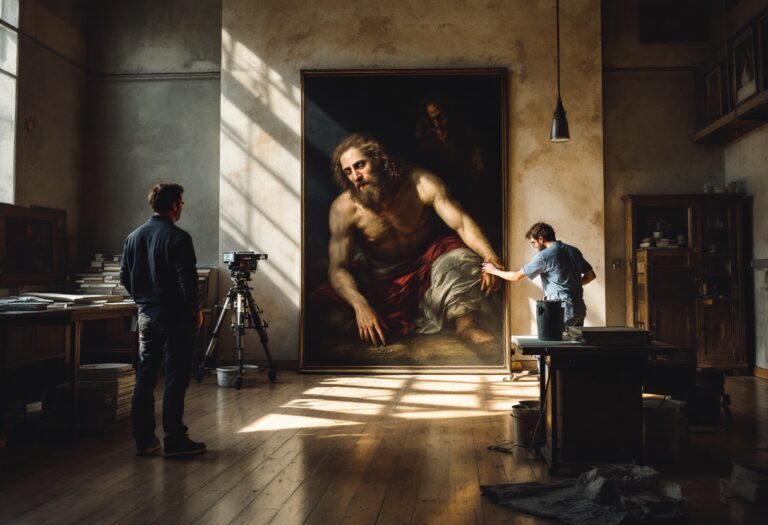Argomenti trattati
In a remarkable intersection of art and technology, a hidden portrait has been uncovered beneath the renowned painting Ecce Homo by the celebrated Renaissance artist Tiziano Vecellio, commonly known as Titian. This extraordinary revelation, made possible through advanced imaging techniques, has captivated art enthusiasts and historians alike, shedding light on the intricate layers of creativity that define Titian’s work.
The Discovery Process
The journey to uncover the concealed portrait began in 2017 when a team of heritage scientists from the Cyprus Institute’s Andreas Pittas Art Characterization Laboratories was tasked with examining Titian’s oil painting in preparation for conservation efforts. Utilizing cutting-edge digital imaging and spectroscopy, researchers were able to peer beneath the surface of the artwork, revealing a previously hidden image of an unknown man. This gentleman, adorned with a mustache and depicted in a standing position, holds a quill in one hand while resting the other on a desk, suggesting he may have been a professional, possibly a merchant or banker.
Technological Innovations in Art Restoration
The exhibit titled “Unseen Gaze – The Hidden Portrait under Titian’s Ecce Homo,” currently on display at the Limassol Municipal Arts Center in Cyprus, showcases the findings of this groundbreaking research. The exhibit features a recreated version of the concealed portrait, meticulously crafted by artist Erato Hadjisavva, based on the data collected during the imaging process. This innovative approach highlights the potential of technology to not only restore but also reinterpret historical artworks, offering new insights into the artistic practices of the past.
The Significance of the Uncovered Portrait
As art historians delve deeper into the implications of this discovery, it becomes evident that the hidden portrait is more than just a relic of the past; it serves as a testament to the evolving relationship between art and science. The findings suggest that Titian, like many artists of his time, often reused canvases, a practice that raises intriguing questions about the intentions behind his work. The unfinished nature of the upper layers of Ecce Homo indicates that the artist may have intended to complete the portrait at a later date, a plan that was ultimately thwarted by his untimely death in 1576.
Moreover, the insights gained from this discovery extend beyond the individual portrait. Harvard University professor Ioli Kalavrezou has noted how elements of the hidden portrait influenced the composition of Ecce Homo, particularly in the depiction of Pontius Pilate and the drapery surrounding him. Such revelations not only enrich our understanding of Titian’s artistic process but also underscore the importance of interdisciplinary collaboration in the field of art history.
As we continue to explore the depths of artistic expression through the lens of modern technology, the hidden portrait beneath Titian’s Ecce Homo stands as a powerful reminder of the stories that lie beneath the surface of our cultural heritage. Each layer of paint, each brushstroke, tells a story waiting to be uncovered, inviting us to engage with the past in ways we never thought possible.

